As a Chicana artist, natural science illustrator, and plant ecologist of mixed European and Indigenous Mexican descent, I am passionate about exploring the connections between place, ecology, and artistic expression while living and working in Norman, Oklahoma.I recently graduated from the University of Oklahoma with a master’s in science, and, in 2014, received a bachelor’s of fine art and Liberal Arts minor from the University of Science and Arts of Oklahoma. The concept of “place” plays an important role in my work as I strive to emphasize the importance of native wildlife and plant species through research on the lifeways and adaptability of each species to their environment.
In 2021, I received grant funding to create “This is Place,” a community wildflower garden and art space in Norman, Oklahoma, alongside my husband, Jessie Rosenfelt, and our family. This project connects art with environmental stewardship, promoting pollinators and fostering conversations about place-based concepts inspired by Oklahoma artists.
During my final year as a graduate student, I interned with the Chickasaw Nation through the South-Central Climate Adaptation Science Center focusing on Sustainability Science. This experience led to the Native Youth Climate Adaptation Leadership Congress (NYCALC) Jr. Faculty position where I was one of twenty students selected from the nation to attend. It was through NYCALC that I discovered the Community Action funding opportunity provided by Fresh Tracks.
This is Place seeks to connect art with environmental stewardship through the creation of a community wildflower garden that promotes pollinators, seed saving, and conversation around place-based concepts brought about by artists in Oklahoma. Visitors can walk along a meandering path between native flowers and grasses. Within the garden, five works of art are displayed on two-foot by four-foot weather-proof vinyl adhered to star-bond metal and posted on handmade rebar-metal sculpted in the shape of leaves.
In 2024, with Jessie and artist Amber Duboise-Shepherd, we selected four Oklahoma artists—Jessica Crow, Amy Heath, Liz Dueck, and returning artist Sheree Greider—to showcase their work. Thanks to Fresh Tracks at the Aspen Institute, each artist received an honorarium for their art, which was printed and installed in the garden in November 2024.
Below is a written Q&A based on prompts from Fresh Tracks. Please read on to learn more about my work and the project.
How does this project highlight the relationship between art, land, and community?
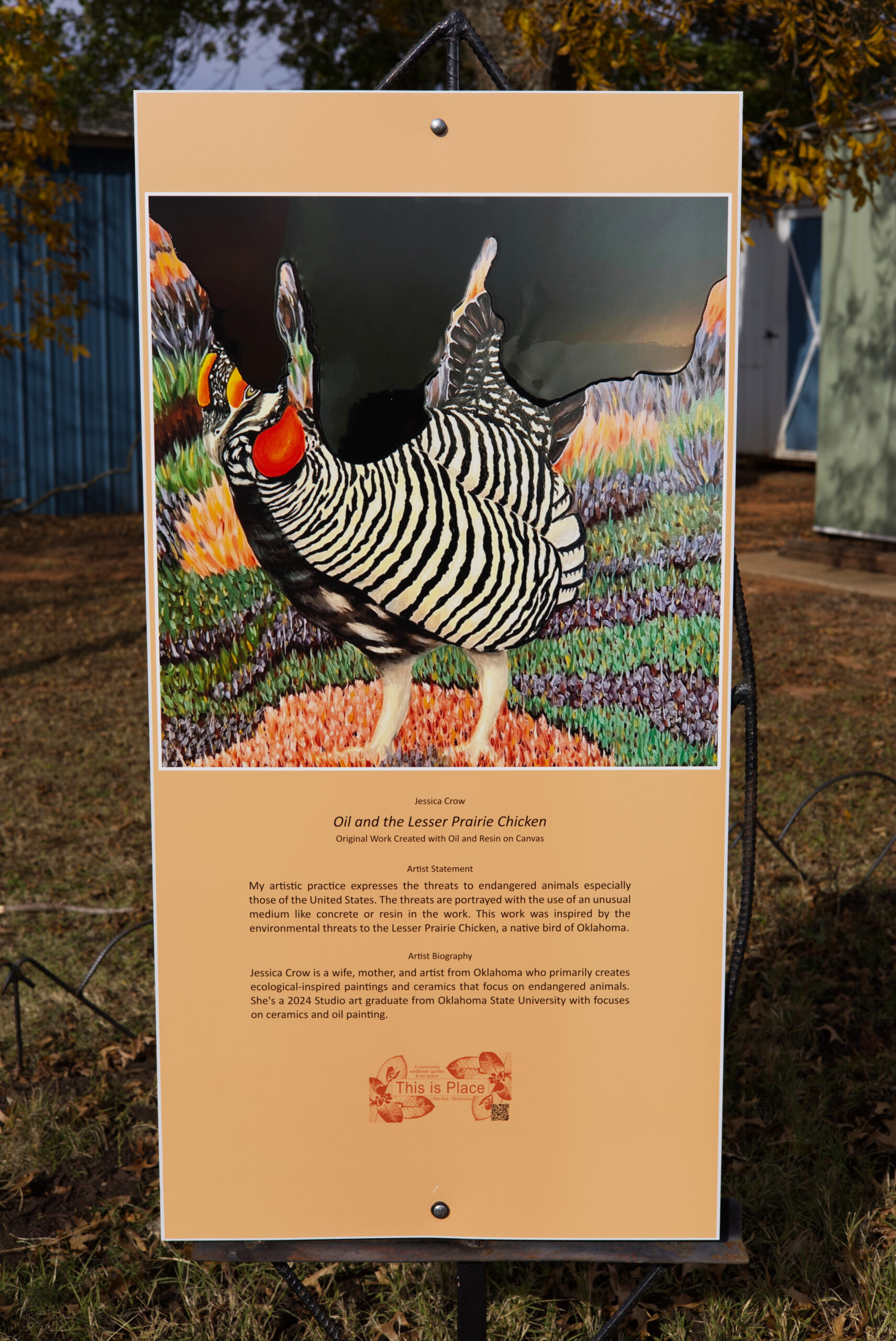
“Oil and the Lesser Prairie Chicken” by Jessica Crow
The work of each artist uniquely depicts how humans are connected to the land, plants, and wildlife. One painting represents the lesser prairie chicken whose body and the surrounding landscape are dredged by a shiny, black substance the artist poured over the colorful painting. Artist Jessica Crow, created the piece “Oil and the Lesser Prairie Chicken” to raise awareness to the plight of the lesser prairie chicken who is an endangered bird species native to prairies, an at risk and endangered ecosystem made up of wildflowers and grasses. Crow used resin to create the black substance which represents the threats energy companies, specifically oil and gas, pose upon the endangerment and potential loss of this species due to this industries relentless destruction and pollution of the bird’s habitat. The remaining features of the lesser prairie chicken represents both this major loss of the species, but also the hope that comes from growing awareness of their existence and the threats faced by their declining populations.
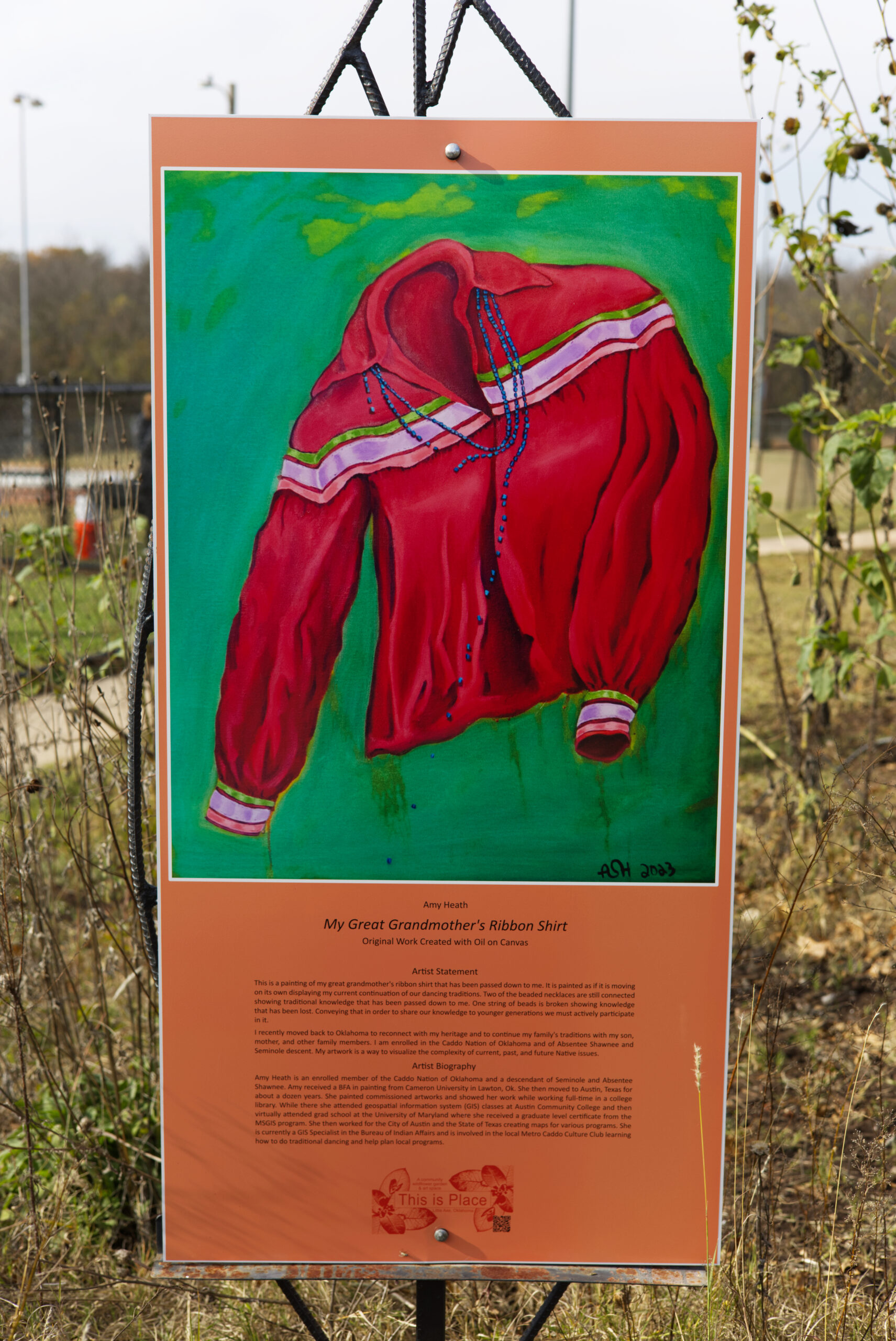
“My Great Grandmother’s Ribbon Shirt” by Amy Heath
The work, “My Great Grandmother’s Ribbon Shirt”, created by Absentee Shawnee Tribal member, Amy Heath, is a representation of Heath’s great grandmother’s colorful ribbon shirt that was sewn together nearly one-hundred years ago. Through her painting, Heath created the imagery of two beaded necklaces that hung around the neck of the suspended ribbon shirt. One necklace represents the continuance of tradition, and the second necklace is broken, but still in place. The necklace that is broken represents the opportunities of traditions revitalized through reconnection to family, land, and community.
What role does Traditional Ecological Knowledge (TEK) play in inspiring these artworks?
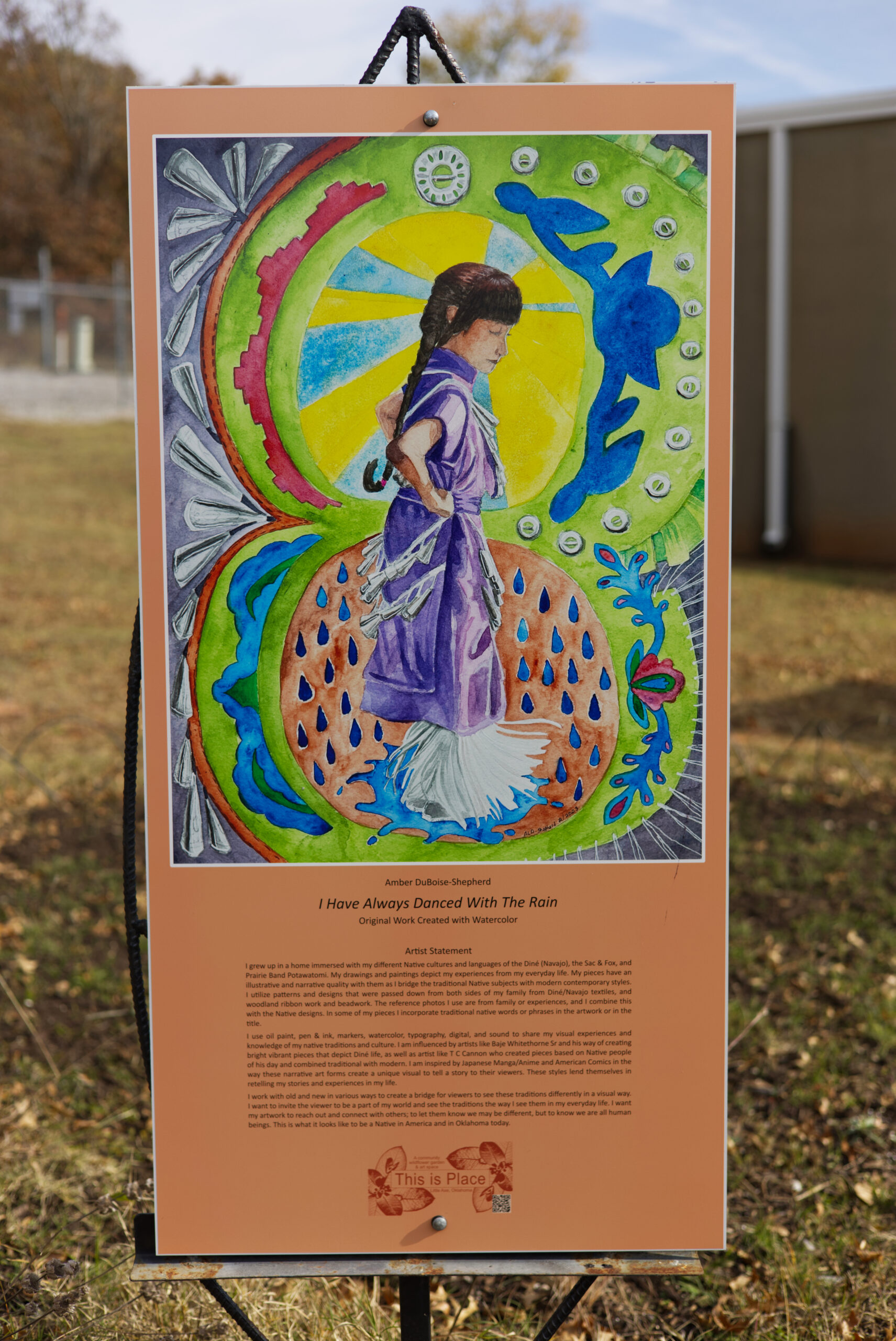
“I Have Always Danced with the Rain” by Amber Duboise-Shepherd
Traditional ecological knowledge refers to a broad spectrum of approaches to learning from, understanding, and interacting with the environment and all those that inhabit it. These are passed down from generation to generation by community and knowledge keepers. Through acts of scientific observation and experimentation, ingenuity, and traditions, Indigenous peoples from all over the world express this knowledge in diverse ways. One tradition that is widely held by Indigenous peoples is through dance. The concept of traditional dance is represented in Diné, Prairie Band Potawatomi, and Sac & Fox Tribal member Amber Duboise-Shepherd’s work, “I Have Always Danced with the Rain”. Duboise-Shepherd’s work depicts herself as a child in a purple jingle dress. Around the child are light rays, rain drops, and culturally significant symbols and designs. This work is a beautiful rendition of the continuance of traditional dance that serves as an act of gratitude, respect, and honor for the weather and the rains that enable life to thrive.
How does showcasing these works at events amplify conversations around Indigenous knowledges and ecological balance?
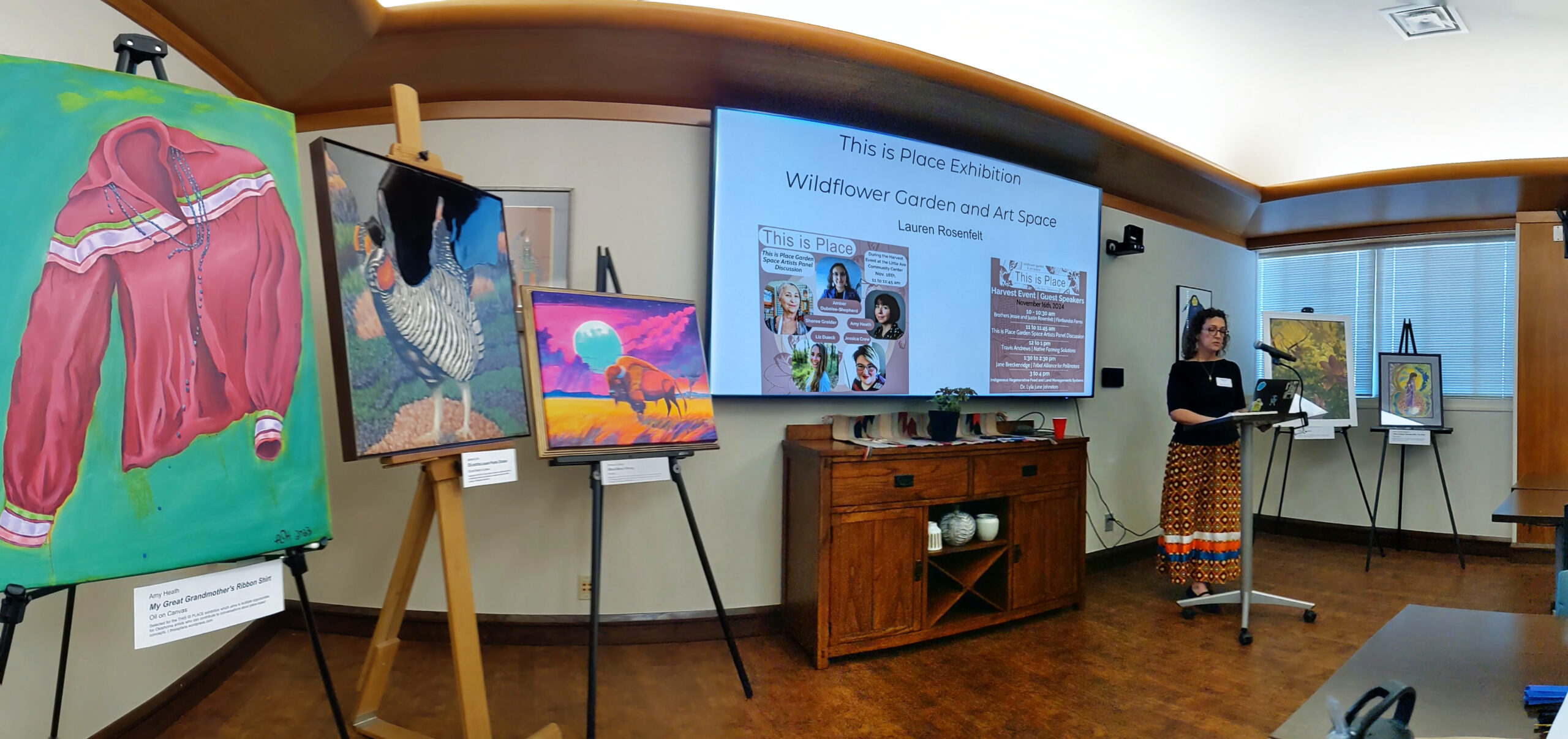
Research as Relationship guest speaker, Amelia Cook, with the South-Central Climate Adaptation Science Center.

Guest viewing Jessica Crow’s original work at Dr. Robin Wall Kimmerer’s reception and book signing.
In November 2024, the selected artworks were highlighted during three events centered around relationships to the land. The first two events were held on the same day at the University of Oklahoma’s campus in Norman and featured the original framed art works. The first event, “Research as Relationship”, displayed the works onstage beside the speakers whose research covered topics including, to teach like an ancestor, resilience through earth-sky education, and converging Indigenous agroecology with sustainable energy systems, among others. The second event took place during the reception and book signing of the visiting author, Dr. Robin Wall Kimmerer. Preceding the reception, Dr. Wall Kimmerer presented the concepts of kinship and reciprocity as discussed in her book, Braiding Sweetgrass. Visitors to the reception and book signing were able to view the art and continue their conversations resonating from the presentation.
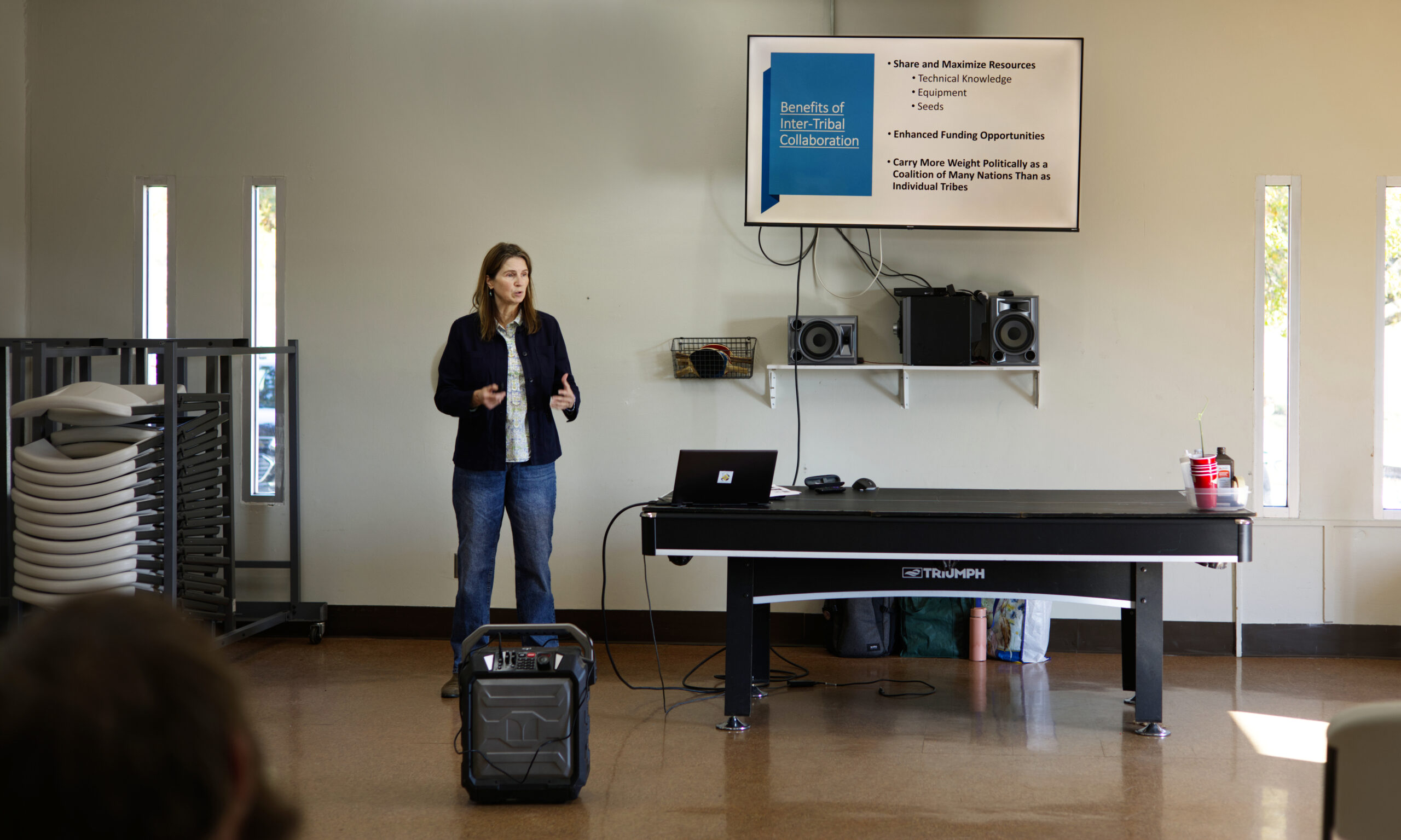
This is Place Harvest Event guest speaker, Jane Breckenridge, with Tribal Alliance for Pollinators.
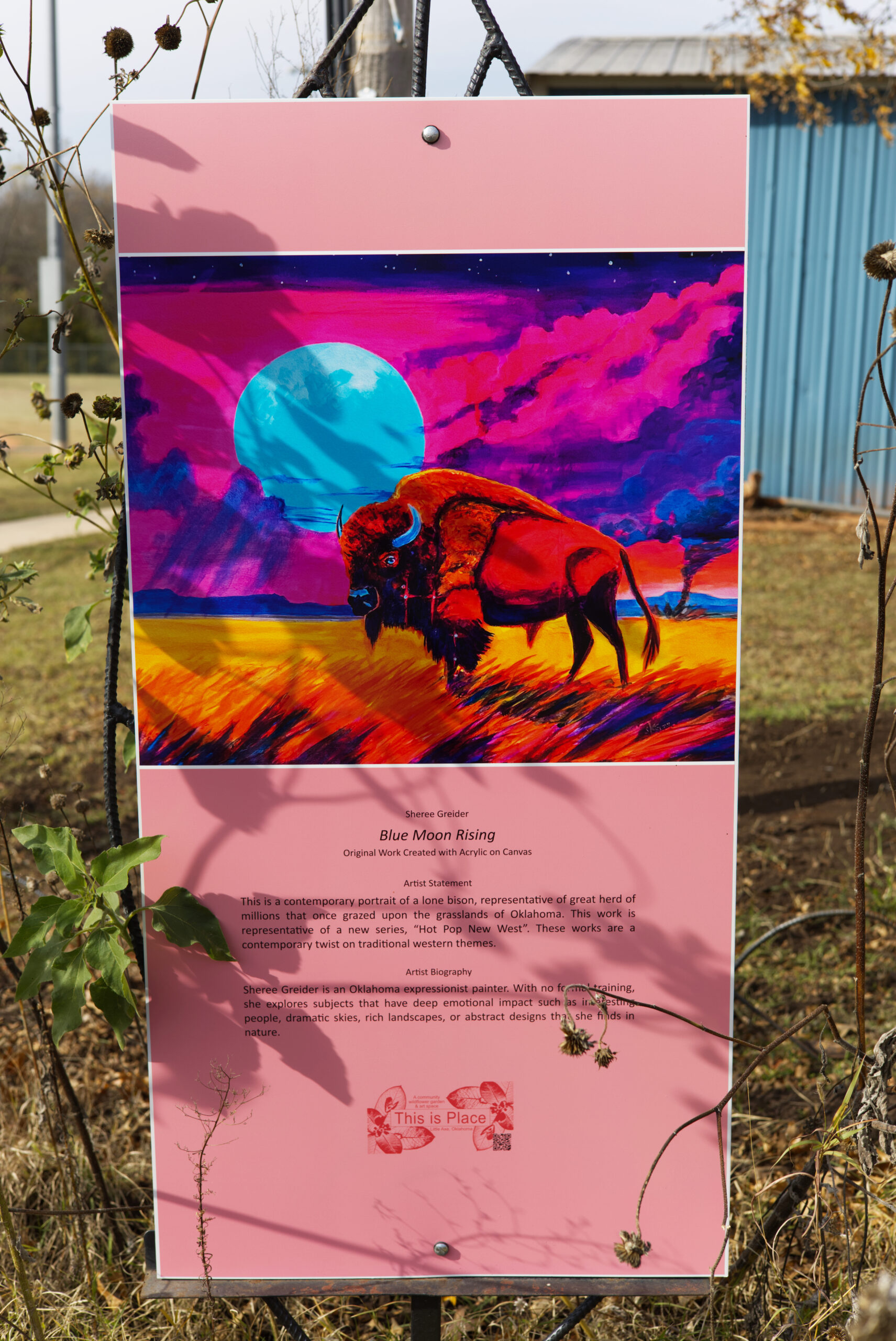
“Blue Moon Rising” by Sheree Grieder
The third event was the 2024 “This is Place Harvest Event” at the Little Axe Community Center. The Harvest Event invited the Little Axe and surrounding communities to celebrate the end of the harvest season, and the installation of the new art works in the senesced wildflower garden. The event brought together local vendors made up of artists and artisans, plant growers and plant medicine producers, along with several of Oklahoma’s environmentally focused organizations, such as Wildcare Oklahoma, Oklahoma Biological Survey, and Okies for Monarchs. The Harvest Event provided a space to amplify conversations around Indigenous knowledge and ecological balance through presentations by guest speakers from the Tribal Alliance for Pollinators and Native Farming Solutions.
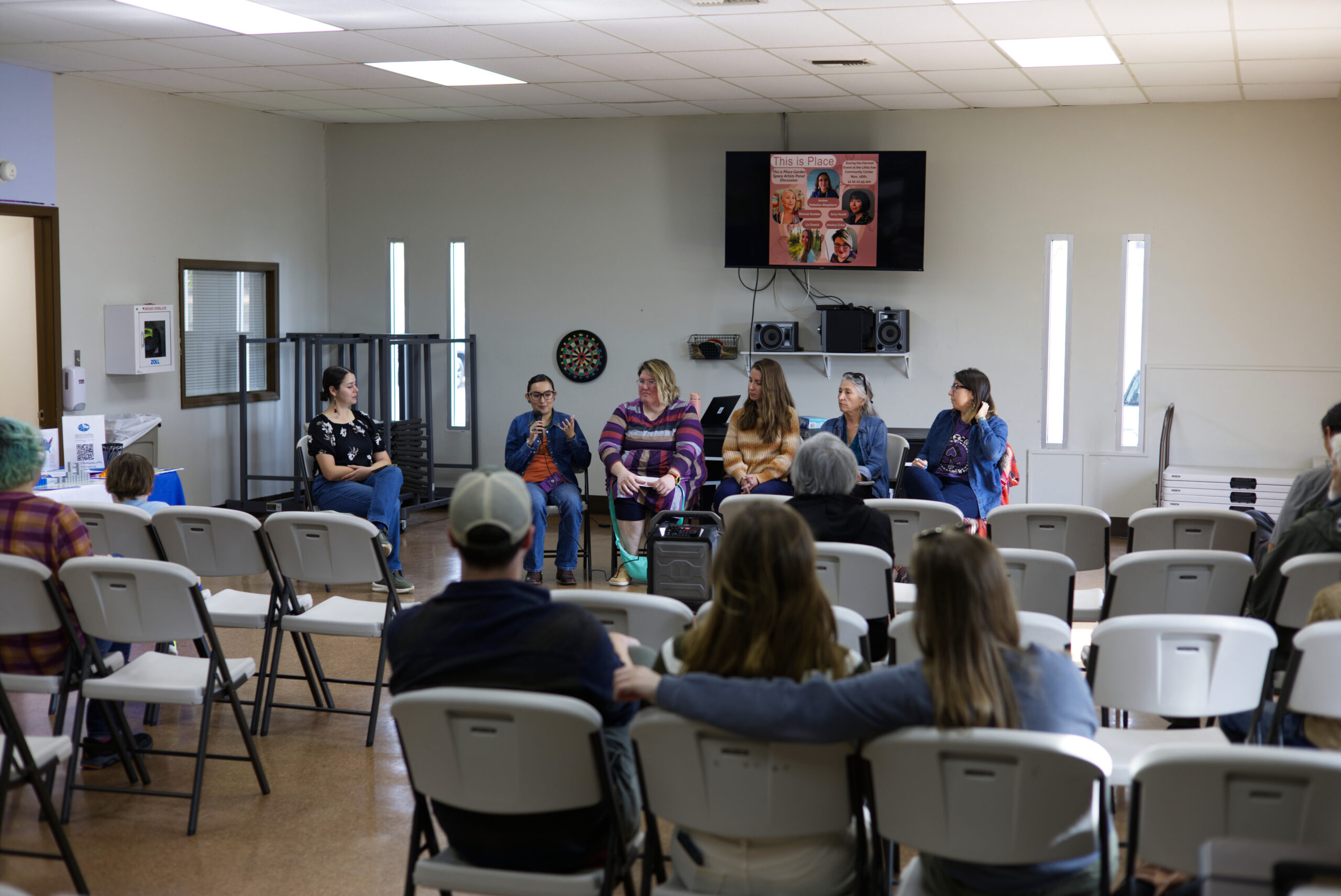
This is Place Harvest Event artist panel discussion.
During the Harvest event, the featured artists sat on a panel discussion giving them the chance to answer questions centered around their artistic concepts. Woven through the discussion was an appreciation for the past, present, and hope for the future. The work “Blue Moon Rising” by Sheree Grieder, depicts a lone bison standing on the plain. The bison is accompanied by a tornado and a striking skyscape that brings a sense of surrealism with bright blues, purples, pinks, and oranges. Grieder’s work brought to the forefront of the significant loss the people and land endured because of colonized efforts to eradicate the bison, which was and is an essential food source for Indigenous peoples all over Turtle Island. However, this work brings light to the resilience that comes from survival and the hope that is always on the horizon.
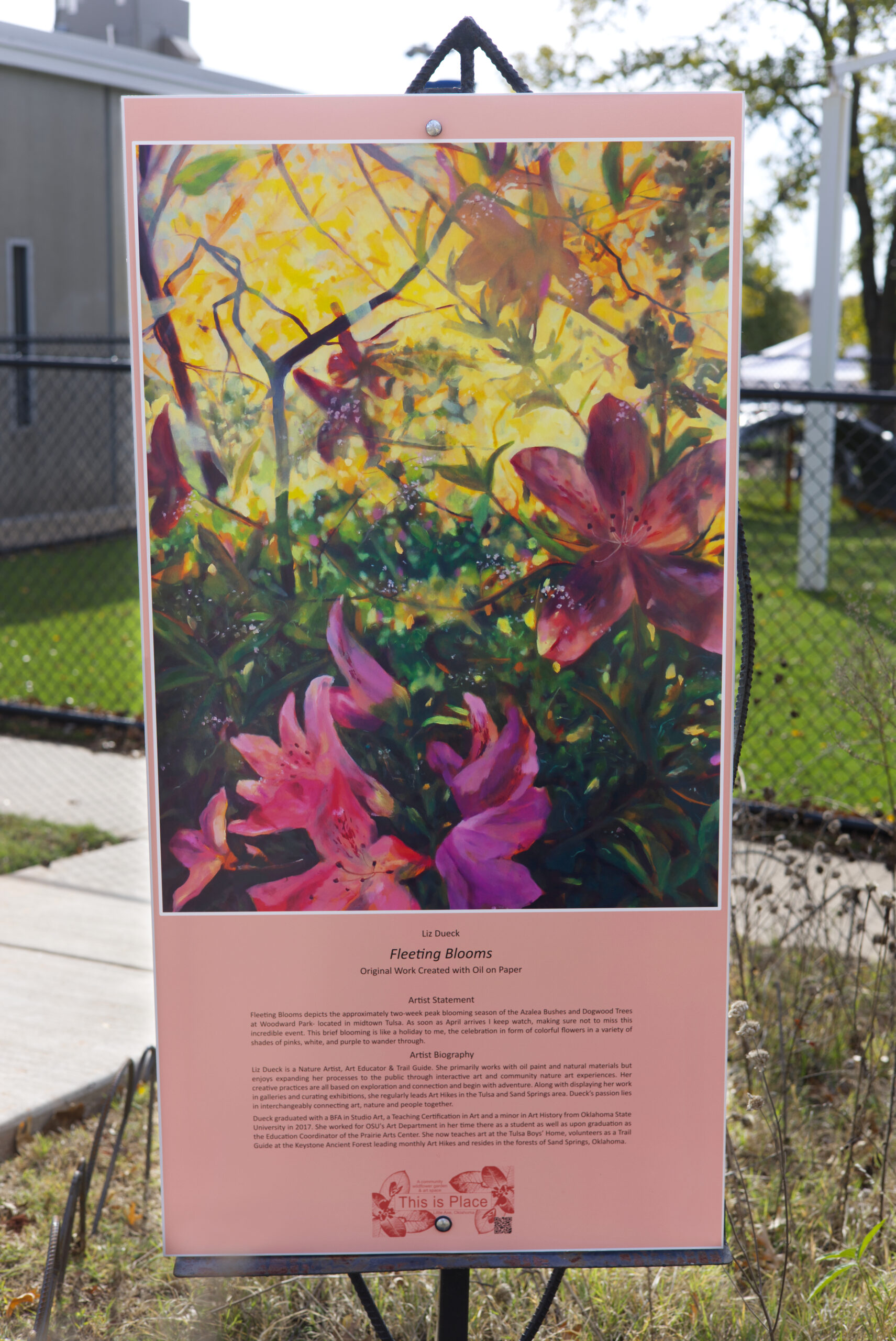
“Fleeting Blooms” by Liz Dueck
The art piece titled, “Fleeting Blooms” by Liz Dueck, depicts a moment in time during the Azalea Bushes and Dogwood Trees short blooming time frame. Dueck sought out the exact moment of capturing her painting through thorough observation. Dueck’s work speaks to the ephemeral moments that escape us when we are not careful in our everyday observations. This work highlights the importance of the present and how we are responsible for our own awareness and actions. The process of being in the present moment can be a challenging task. Often, our lives are overconsumed by distractions that draw away our attention from the blooming of plants and how important this process is for the land and all our relatives. When we are unfocused on the present, we tend to forget to honor and respect all those who have given us this life of abundance.
Dueck’s work reminds us that every moment and every day is fleeting. The fleeting blooms represent those moments that tell us what we need to know and help us to honor and respect the gift that is every moment on this earth.